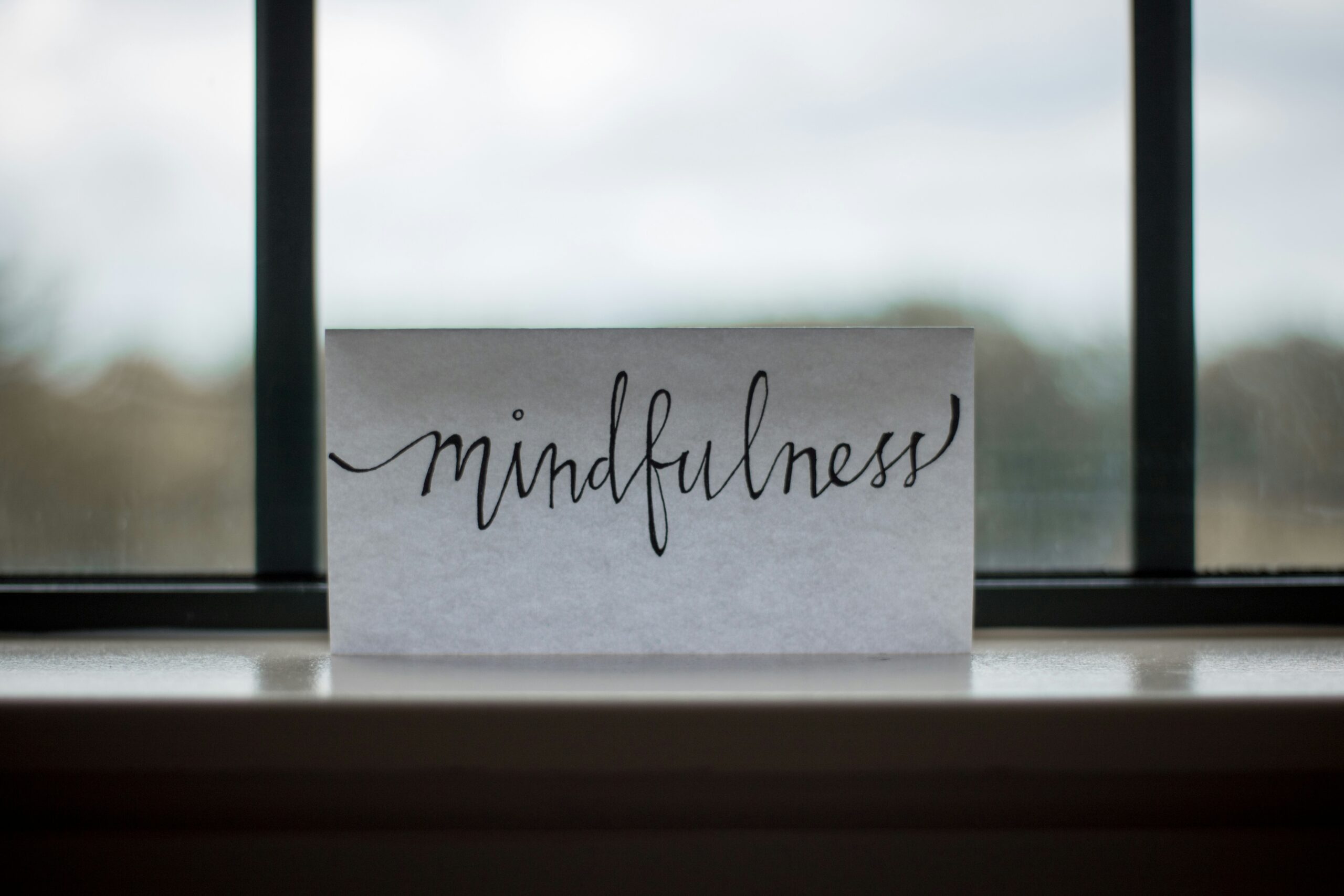
Introduction to Mental Clarity
Mental clarity refers to a state of clear, focused thought that enables individuals to make informed decisions, innovate, and engage meaningfully with their surroundings. In contemporary society, characterized by buzzing notifications, constant multitasking, and an overload of information, achieving mental clarity is more crucial than ever. A cluttered mind can lead to diminished productivity, stifled creativity, and an increase in feelings of anxiety or frustration. When our thoughts are scattered and overwhelmed, it becomes challenging to achieve our goals, maintain relationships, or manage stress effectively.
Each day, we are bombarded with stimuli, from digital distractions to overwhelming responsibilities. This incessant influx can create a mental fog that hinders our ability to think critically and act decisively. Consequently, individuals may find it difficult to focus on tasks at hand, leading to procrastination and a sense of inadequacy. Moreover, a cluttered mental space can negatively impact emotional well-being, resulting in increased stress levels, irritability, and even burnout. Thus, cultivating mental clarity is not merely a luxury but a necessity for maintaining overall health and productivity.
This blog post aims to equip readers with several succinct techniques that promise to enhance mental clarity in just 15 minutes. By integrating these practical strategies into daily routines, individuals can foster a more organized mindset, facilitating enhanced decision-making and problem-solving capabilities. As we delve deeper into the specifics of these techniques, readers are encouraged to keep an open mind, ready to embrace changes that can produce immediate benefits. Embracing mental clarity is the first step towards optimizing not only one’s productivity but also emotional resilience and creativity.
Identifying Mental Clutter
Mental clutter refers to the overwhelmed state of mind caused by an array of thoughts, feelings, and distractions that can hinder clarity and decision-making. Recognizing this clutter is the first step toward achieving mental clarity. Various forms of mental clutter can manifest, including stress that arises from personal or professional responsibilities, distractions from digital devices, negative thoughts, and the persistent weight of overwhelming obligations. Such clutter can lead to feelings of anxiety, decreased productivity, and general dissatisfaction in everyday life.
One common form of mental clutter is stress, which can stem from various sources, such as work-related pressures, family responsibilities, or financial concerns. When individuals are consistently bombarded with stressors, their capacity to think clearly and focus diminishes significantly. Distractions, particularly those emanating from technology, contribute to this mental clutter as they fragment attention and disrupt the ability to concentrate on tasks at hand. Similarly, negative thoughts—be they self-doubt or pessimistic outlooks—can create a cycle that fosters further mental chaos, inhibiting positive thought processes.
Overwhelming responsibilities, whether in a personal or professional context, can also contribute significantly to mental clutter. When tasks appear insurmountable, individuals may feel paralyzed, unable to take action or prioritize effectively. This often leads to a backlog of responsibilities, intensifying feelings of incompetence and frustration. To effectively identify personal mental clutter, one can engage in reflective practices such as journaling or mindfulness exercises. Such techniques provide insight into recurring thoughts and feelings, thus helping to bring awareness to sources of mental turmoil. By regularly assessing the state of one’s mind, individuals can better understand their unique mental clutter and strive to cultivate a clearer, more focused mental landscape.
The Power of Deep Breathing
Deep breathing is a highly effective technique for achieving instant mental clarity and relaxation. This practice not only helps to reduce stress but also enhances overall well-being by allowing the mind to declutter from overwhelming thoughts. Engaging in deep breathing exercises can create a moment of pause amidst the chaos, enabling individuals to regain focus and rejuvenate their mental state.
To practice deep breathing effectively, find a quiet space where you can sit or lie comfortably. Begin by closing your eyes to eliminate distractions and bring your attention inward. Inhale slowly through your nose for a count of four, allowing your abdomen to expand fully. Hold your breath for a count of four, ensuring you are not straining. Then, exhale slowly through your mouth for a count of six, focusing on releasing any tension. Repeat this cycle for five to ten minutes.
It is crucial to practice this deep breathing technique regularly to maximize its benefits. Aim for at least once a day, preferably during times of stress or when you need to concentrate. Moreover, integrating deep breathing exercises into your morning or evening routine can significantly enhance your emotional resilience and mental clarity over time.
Research indicates that deep breathing activates the body’s relaxation response, which can lead to decreased heart rates and lowered blood pressure. These physiological changes promote a sense of calm and clarity. Studies have shown that just a few minutes of focused breathing can alleviate anxiety and improve cognitive function, further underscoring the importance of this simple yet powerful tool. For more in-depth insights, consider exploring reputable sources on the benefits of breathing exercises, such as those provided by the American Institute of Stress or Harvard Health Publishing.
Journaling for Clarity
Journaling serves as a powerful tool for achieving mental clarity, allowing individuals to express their thoughts, process emotions, and alleviate stress. The act of writing down one’s thoughts can facilitate a clearer mindset, promoting emotional well-being. By participating in journaling, individuals engage in a therapeutic exercise that not only organizes their thoughts but also illuminates underlying feelings that may require attention.
One effective technique is free writing, which involves setting a timer for a short duration, usually 5-10 minutes, and writing continuously without worrying about grammar or structure. This unrestricted expression often uncovers thoughts and feelings that may otherwise remain buried, providing insights that lead to clarity. As the pen flows, the mind can release pent-up ideas, worries, or even inspirations, making way for greater focus and purpose.
Another approach is the use of structured prompts. By responding to specific questions or statements, individuals can guide their journaling to address particular issues or goals. For example, prompts such as “What am I grateful for today?” or “What challenges am I currently facing, and how can I overcome them?” can help center the mind, streamlining thoughts in an organized manner. Resources with compiled journal prompts can be found online, providing inspiration and support for new journaling enthusiasts.
To maximize the benefits of journaling within a short timeframe, it is essential to create a conducive environment. Designating a quiet space, minimizing distractions, and allowing oneself a moment of stillness before starting can create a relaxed mindset. Whether utilizing free writing or structured prompts, journaling can be an invaluable practice for gaining instant mental clarity, clarity that resonates throughout one’s daily life.
Mindfulness and Meditation Techniques
Mindfulness and meditation are powerful tools that can significantly enhance mental clarity and reduce stress within a short period. The foundation of mindfulness lies in the practice of maintaining a moment-by-moment awareness of our thoughts, feelings, bodily sensations, and the surrounding environment. This practice encourages individuals to observe their experiences without judgment or reaction, fostering a sense of peace and clarity.
To get started, here are a few easy-to-follow techniques that can be practiced in as little as 15 minutes:
1. Breath Awareness: Begin by finding a comfortable seated position. Close your eyes and take a few deep breaths. Focus your attention solely on your breath, noticing the rise and fall of your chest. If your mind wanders, gently guide your focus back to the sensation of breathing. Practicing this technique for just a few minutes can help quiet your mind and increase your awareness of the present moment.
2. Body Scan: This technique involves mentally scanning your body for areas of tension. Starting at the toes and gradually moving up to the head, pay attention to how each part feels. Acknowledge any tightness or discomfort without judgment. This awareness can help release tension and promote relaxation.
3. Guided Meditation: Engaging in guided meditation can be particularly beneficial for beginners. There are numerous online resources offering free guided sessions that last from a few minutes to an hour. These recordings can help you focus your mind, facilitating a deeper meditative state.
Integrating these mindfulness and meditation techniques into your daily routine can lead to clearer thinking and improved emotional well-being. The consistent practice of these techniques not only aids in decluttering the mind but also offers a systematic approach to managing stress in everyday life. For further exploration, numerous articles and studies provide insight into the science behind mindfulness, which can deepen your understanding of its benefits.
Declutter Your Digital Space
In an age where technology permeates every aspect of our lives, the digital clutter we accumulate can significantly impact our mental clarity. Decluttering your digital space is essential for fostering a clear mind and enhancing productivity. Start by organizing your files on computers and cloud storage. Create folders that categorize documents based on specific topics or projects, allowing for easier access and immediate clarity on your digital responsibilities.
Next, assess the applications installed on your devices. Uninstall apps that you no longer use or need, as these can distract you and take up unnecessary space. Consider using organizational tools like Trello or Notion, which help manage tasks and notes in an effective manner. These applications provide a streamlined solution, allowing you to visualize your workload and reduce the cognitive load associated with managing multiple tasks across various platforms.
Furthermore, managing notifications is another pivotal step in digital decluttering. Constant notifications can create an incessant barrage of distractions, pulling you away from focused work. Review the apps on your devices and disable non-essential notifications, limiting alerts to only the most important communications. This approach will not only reduce interruptions but also lead to a calmer digital environment.
Finally, schedule dedicated digital downtime. Designate specific periods during your day to step away from screens and engage in non-digital activities. This practice provides your mind with a necessary break, promoting mental clarity and enhancing overall well-being. Applications like Forest can help you stay accountable during these downtime sessions by encouraging focus through gamified experiences. By incorporating these strategies into your routine, you can effectively declutter your digital space, paving the way for improved mental clarity.
Incorporating Movement: Quick Exercises
Physical movement plays a vital role in clearing the mind and promoting mental clarity. Engaging in quick exercises for just 15 minutes can significantly enhance cognitive functions and reduce feelings of stress or anxiety. Research indicates that even short bursts of movement can trigger the release of endorphins, commonly known as “feel-good” hormones, which contribute to an improved mood and heightened focus.
Here are a few simple exercises you can incorporate into your routine. First, consider a series of dynamic stretches which effectively stimulate blood circulation to the brain, fostering alertness. Simple movements such as arm circles, torso twists, and leg swings can be performed in a small space and offer immediate benefits.
Alternatively, you can follow the approach of high-intensity interval training (HIIT), performing a combination of exercises like jumping jacks, squats, and lunges. This method not only challenges the cardiovascular system but also engages large muscle groups, maximizing the benefits of your limited time. A structured 15-minute HIIT session can raise your heart rate while simultaneously decluttering your thoughts, ultimately leading to a clearer mind.
Moreover, outdoor activities, such as brisk walking or cycling, also provide an effective way to disconnect from mental clutter. Studies suggest that exercising in nature can significantly reduce stress, enhance mood, and improve overall cognitive performance. The blend of physical activity with fresh air and natural surroundings offers a dual benefit for both the body and mind.
In summary, integrating movement into your daily routine is an effective technique to foster mental clarity. Whether through dynamic stretching, quick outdoor activities, or interval training, even a brief session of movement can aid in achieving greater mental focus and emotional stability.
Creating a Clarity Routine
Establishing a clarity routine is an effective strategy for individuals seeking to enhance their mental clarity amidst busy schedules. The first step in creating this routine is to set aside a dedicated time each day, preferably when distractions are at a minimum. Whether early in the morning or during a lunch break, finding a consistent time ensures that this practice becomes a habit, ultimately leading to improved mental wellbeing.
To develop a personalized decluttering routine, start by selecting the techniques that resonate best with you. For example, incorporate mindfulness meditation for five minutes to center your thoughts, followed by journaling for another five minutes to release any lingering concerns or stressors. This combination not only provides clarity but also fosters self-awareness, allowing for a thorough examination of one’s thoughts and feelings.
Another key aspect of a clarity routine is physical decluttering of your workspace. A tidy environment can greatly impact mental clarity. Set aside another five minutes to organize your workspace, removing any unnecessary items that may contribute to mental clutter. This process can also include digital decluttering, such as organizing files on your computer or clearing your email inbox.
As you develop your clarity routine, experiment with various techniques to determine what works best for you. Consider alternate approaches like mindfulness breathing exercises, quick stretches, or visualization techniques, which can seamlessly be integrated into your daily practice. By committing to this structured approach towards mental decluttering, individuals will likely experience enhanced focus, creativity, and productivity over time.
By dedicating just 15 minutes each day to this clarity routine, you will find that mental clutter diminishes, allowing for clearer thinking and improved decision-making. As this practice becomes an integral part of your daily life, the benefits will extend well beyond those initial moments of mental clarity, impacting overall wellbeing and effectiveness in both personal and professional spheres.
Conclusion: Your Path to Clearer Thinking
In summary, the journey toward achieving mental clarity does not have to be a lengthy or complicated process. Throughout this blog post, we have explored various techniques that can be implemented in just 15 minutes, providing readers with practical tools to declutter their minds swiftly and effectively. From mindfulness practices such as deep breathing and meditation to organizational strategies like journaling and prioritization, each method serves as a stepping stone toward enhanced mental clarity and reduced cognitive overload.
Implementing these techniques can quickly lead to a more focused mindset, greater emotional stability, and improved decision-making abilities. It is important to remember that mental wellness is a journey; the key is consistency. By dedicating a few minutes each day to these practices, individuals can cultivate a clearer mind that allows for more thoughtful reflection and creativity.
As you explore these methods, consider approaching them with an open mind and a willingness to experiment. Each person’s experience will differ, and finding the right combination that resonates with you is essential. We encourage you to share your experiences with these techniques, potentially inspiring others in their own pursuit of mental clarity.
For those looking to delve deeper into the realm of mental wellness, additional resources are available, from books on mindfulness to online courses focused on personal development. Investing time in learning and practicing these strategies can yield long-lasting benefits for your mental health.
Take the first step today towards a decluttered mind and a clearer path to your thoughts. Remember, every small effort contributes to a healthier mental state.








